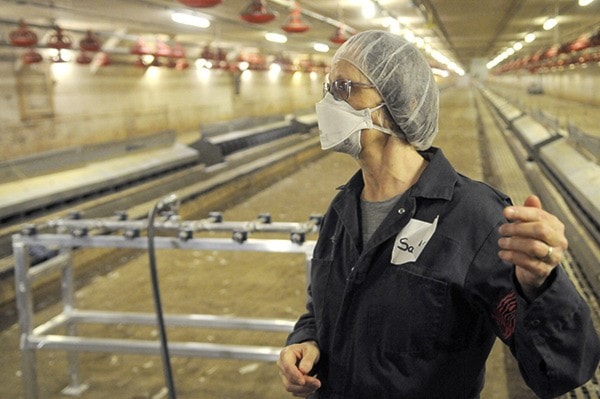The next time avian influenza is detected in British Columbia, the provincial agriculture ministry and industry groups hope to halt the virus in its tracks by euthanizing all birds on the first-affected farm within 48 hours.
A December 2014 outbreak of a deadly form of the disease saw 200,000 birds killed at 11 different farms. The reaction to the outbreak was deemed a success, with another strain of the contagious virus killing millions of birds in the United States. But officials say the response can get better – especially when it comes to efforts to contain the virus to the locations first affected. During the outbreak, it took as many as five days for the birds to be destroyed in the first two farms impacted.
To speed up the process, the province has purchased its own equipment to use CO2 to kill large numbers of affected birds. Previously, it had relied on the Canadian Food Inspection Agency to lead that process. And last week, the province, the Canadian Food Inspection Agency (CFIA), and industry groups held a four-day training exercise at an Abbotsford poultry farm to practise the rapid response to an outbreak.
Dr. Jane Pritchard, the province’s chief veterinary officer, said Wednesday that time is of the essence after avian influenza is first detected. She said the longer the infected birds continue to live, the higher virus levels get, increasing the chance that it will spread.
“Every bird that’s infected is constantly producing more and more virus,” Pritchard said. “As soon as you kill them, they stop producing the virus.”

Quick euthanization is also needed to halt the suffering of the birds, Pritchard said, with those dying from the virus during last year’s outbreak doing so in “such agony.” Pre-empting those deaths with euthanization – in which the CO2 renders birds unconscious before it kills them – is much more humane, she said.
Pritchard and the CFIA’s Sandra Stephens recently laid out the rapid response process for reporters. When avian influenza is first detected, the farm will quickly be quarantined and, while CFIA officials are still on their way to B.C., the province will mobilize their own resources to kick the process into gear. Workers don several layers of protective garments, both to ensure they aren’t exposed and to make sure they don’t bring the virus off-site.
After the affected barn is sealed, CO2 from trucks parked nearby is pumped into the structure, using specially designed manifolds meant to evenly spread the gas among the birds.
The animals are to be knocked out within minutes, with death following soon after. All material on site is then composted within the barns, with piles needing to reach around 37 degrees C to eradicate traces of the virus.
Pritchard said the exercise has been invaluable, but has also given officials hope that they will be able to improve upon the 48-hour target.
